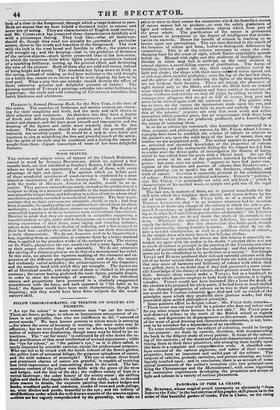WOOD STATUES.
THE curious and unique series of statues of the Church Reformers, carved in wood by ANDREA BRUSTOLINI, which we noticed a few months back, are now exhibited at Stanley's Rooms, Old Bond Street ; where we have had an opportunity of seeing all of them, with every advantage of light and space. The opinion which we before gave of these wonderful specimens of wood-carving is confirmed by a more attentive examination of the whole twenty-five. To compare them with the works of MICHAEL ANGELO in marble, would be an in- justice. They possess extraordinary merit, viewed as the production of a sculptor werkiug in a material unfavourable to the representation of the anatamyof the human form, and belonging to a class of artists whose chief excellence generally consisted in mechanical dexterity. The best wood- carvings that we have ever seen are admirable chiefly as such ; had they been in marble, the quality of the art would not have raised them far above mediocrity :. nor do we think these statues an exception. The display of anatomical teaming is in many instances more ostentatious than correct. Bean ng in in that they are represented as caryatides supporting a superincumbent aveglit, under which they groan—as is evident from the strong expression .04; their faces, some raging and scowling defiance, others more subdued in their display of suffering, and a few resigned to their hard fate—neither the action of the figures nor their nue:ciliation is truly characteristic. We do not, however, wish to be hypercritical ; but, regarding them as curiosities, to estimate them by a lower standard than is applied to the grandest works of the sculptor's art. The statues on St. Paul's, placed near the eye, would cut but a sorry figure ; though
at their proper elevation they are admirable. We do not scrutinize the carving of a chimney-piece as we do that of a monumental has-relict. In this view, we admire the vigorous marking of the character and ex- pression of the different physiognomies, living and dead ; the uneasy and studiously varied attitudes; the picturesqueness of the draperies ; and the masterly hand with which they are wrought. The figures are all of Herculean mould ; and only one of them is clothed in his proper costume ; the carver having preferred the nude figure, partially draped, in order to show his knowledge of anatomy. Had the individual stature and proportions been preserved in a similarly exaggerated resemblance with the faccs, and each appeared in "his habit as he lived," the figures would have been more characteristic, though less imposing ; and they would have been fitter subjects for the wood- carver's skill.


























 Previous page
Previous page